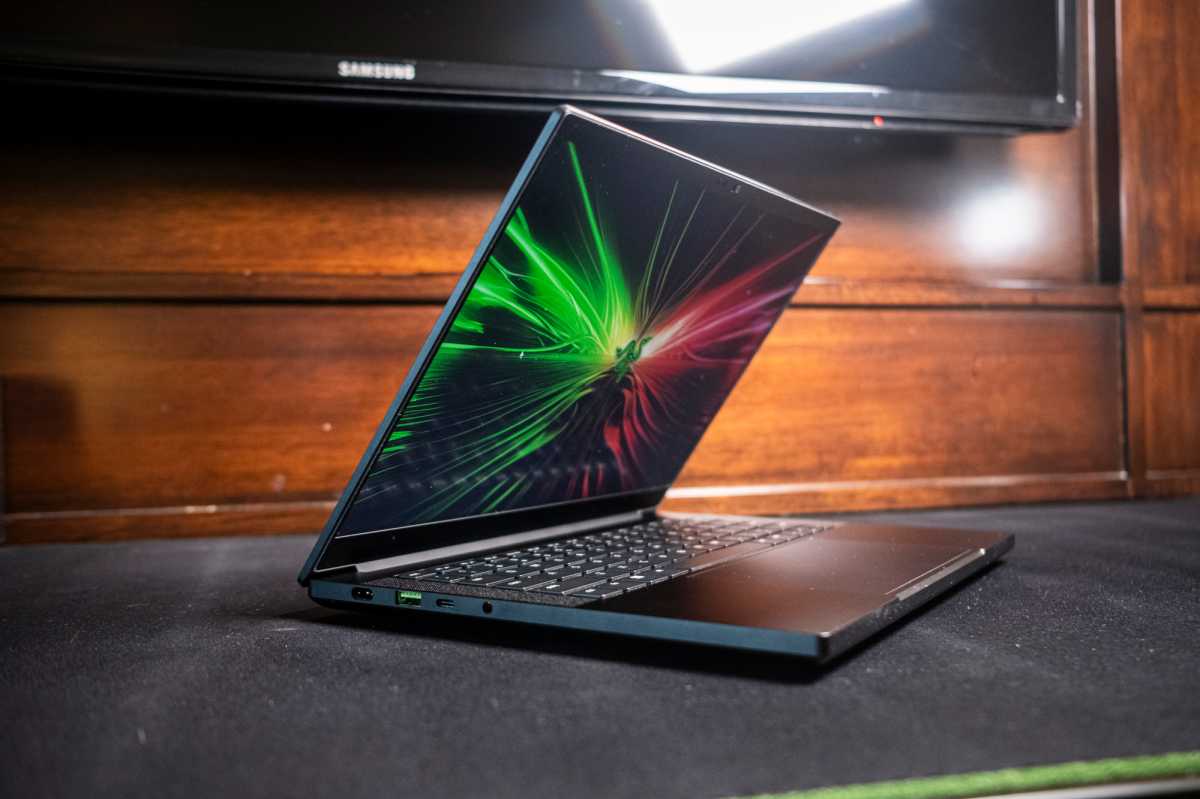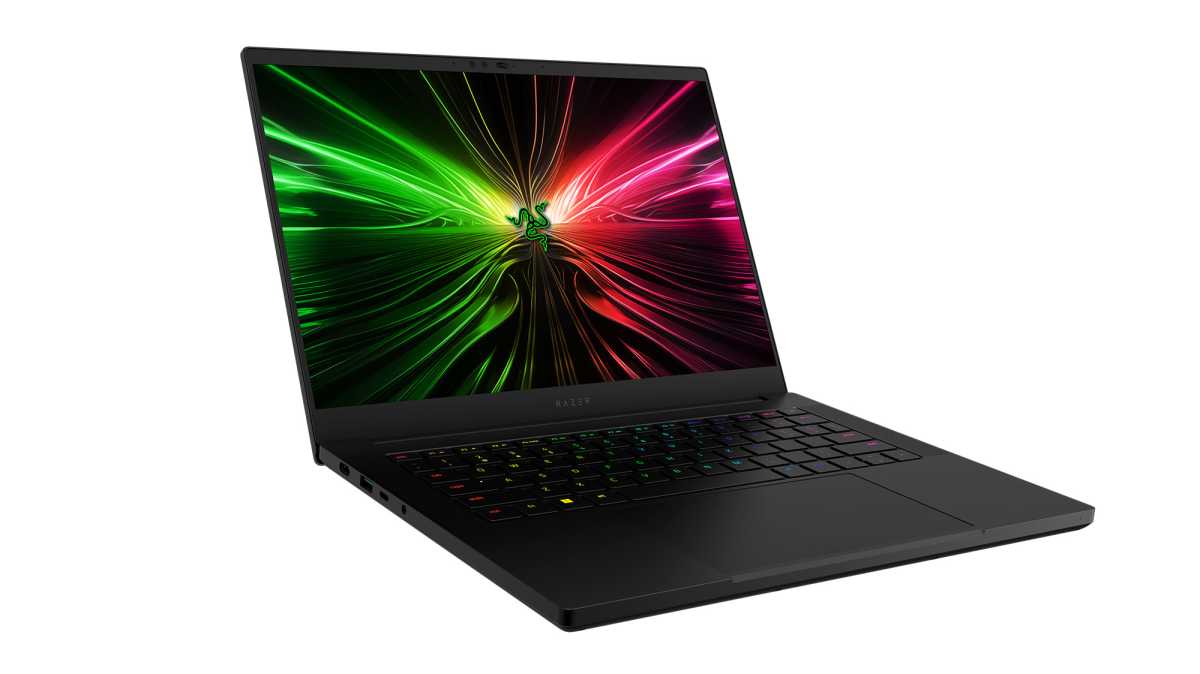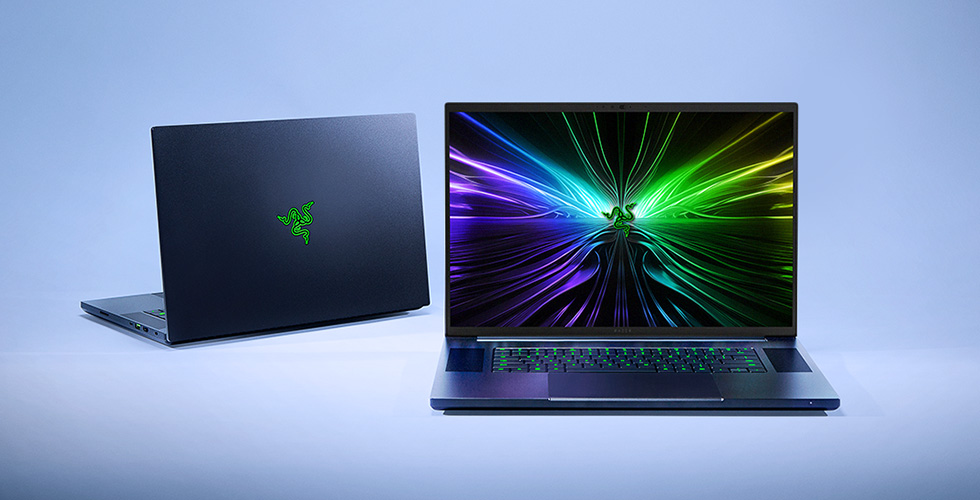
 Image: Adam Patrick Murray/Foundry
Image: Adam Patrick Murray/Foundry
Gaming laptops are becoming more and more mainstream, so it’s impressive that Razer’s Blade series remains at the top of the heap in mindshare more than a decade after its first model. At CES 2024, Razer is introducing three updated models: A 14-inch Blade focusing on portability (or at least, portability in terms of gaming laptops), an 18-inch Blade meant to completely replace a powerful media production desktop, and a 16-inch Blade that straddles the line between the two of them.
Let’s start with the new Blade 16, as it’s the first of these three that will actually launch. The big news, actually announced several days ago, is the new panel. Razer bills this screen as the “world’s first OLED 240Hz 16-inch display.” That’s awfully specific, but as I don’t have a table full of OEM panel suppliers in front of me, I’ll take their word for it. What is remarkable is that this 2560×1600 OLED panel is the base model screen, according to a Razer representative: If you’re shelling out the premium pricing for a Blade 16, you won’t have to spend any more to get its best screen. A mini-LED option is also available if you want 4K resolution.
Inside the laptop is the absolute latest in Intel’s Raptor Lake CPU tech, maxing out at a Core i9-14900HX 24-core. You can overclock the CPU using the performance mode in Razer’s Synapse software in Windows. That’s paired with the most powerful mobile graphics around, too, with the top-of-the-line GeForce RTX 4090 running at its maximum 175 watts when the laptop is firing on all cylinders. The bottom SKU 4060 option has been nixed, and the base model now starts with an RTX 4070. The RAM can get absolutely crazy, maxing out at 96 gigabytes of DDR5 at 5600Mhz.

Adam Patrick Murray/Foundry
Adam Patrick Murray/Foundry
Adam Patrick Murray/Foundry
A larger format gives you a plethora of ports: USB-C and double USB-A plus a headphone jack on the left (along with the proprietary charger port), with an extra USB-C and USB-A on the right, plus full-sized SD card and standard HDMI. The newest Blade 16 is launching today, right now, as this story is published. The base model will cost $2,999.99.

Adam Patrick Murray/Foundry
Adam Patrick Murray/Foundry
Adam Patrick Murray/Foundry
The Blade 14 is Razer’s most compact gaming laptop at the moment, starting at a respectable 4.05 pounds (not bad at all, considering the all-aluminum body). Just like the last two years, the smaller design goes for AMD processors, topping out at the latest and greatest Ryzen 9 8945HS. GPU options are still strictly Nvidia, with the maximum choice being an RTX 4070.

Razer
Razer
Razer
The smaller Blade 14 gets a single USB-C and USB-A plus headphone jack on the left, USB-C and USB-A with HDMI on the right. Note that despite shrinking the chassis, Razer keeps a huge touchpad relative to the keyboard with top-firing speakers flanking it. Absent any other highlights, Razer is retaining the 2560×1600, 240Hz LED display seen on previous models. The newest version of the Blade 14 will go up for pre-order on January 23rd, starting at $2,199.99. That comes with an RTX 4060 and 16GB of DDR5 RAM.

Razer
Razer
Razer
The Blade 18 is the big daddy of Razer’s lineup, and while it isn’t getting the whiz-bang OLED upgrade of its 16-inch cousin, it’s getting an impressive visual upgrade of its own. This comes in the form of 4K resolution (plus a bit extra, for the 16:10 ratio) 165Hz IPS panel, a potent mix of color accuracy, speed, and pure pixel-pushing power. Razer also says it’ll be the first gaming laptop with Thunderbolt 5 when it launches later this year, able to push video out to three 4K monitors at 144Hz on a single cable.
The Blade 18 won’t be updated until well into 2024, but when it does get its refresh, expect the latest Intel processors and Nvidia graphics cards, along with some possible port re-shuffling to accommodate that new tech.
Author: Michael Crider, Staff Writer

Michael is a former graphic designer who’s been building and tweaking desktop computers for longer than he cares to admit. His interests include folk music, football, science fiction, and salsa verde, in no particular order.
Recent stories by Michael Crider:
Nvidia makes GeForce Now easier to run on the Steam DeckMSI Claw claims up to 40% performance boost with new driver, BIOSAcer’s new Helios and Nitro gaming laptops pack all the latest chips



